Agarwood : Agaru (Aquilaria agallocha) Health Benefits
Introduction to Agaru
Agarwood, also known as Agaru in Ayurveda and botanically recognized as Aquilaria agallocha, is a resinous heartwood derived from Aquilaria trees, primarily found in the forests of Assam, Arunachal Pradesh, Tripura, and parts of Southeast Asia. Esteemed for its aromatic, medicinal, and spiritual significance, Agarwood has been embedded in ancient Ayurvedic texts such as Charaka Samhita and Sushruta Samhita, heralded as a divine gift for treating a variety of dosha imbalances and ailments.

Vernacular Names of Agaru
Agaru is revered across various cultures and languages, reflecting its broad usage and cultural importance:
-
English Name: Agarwood, Eaglewood, Aloeswood, Agilawood
-
Hindi: Agar
-
Bengali: Agaru
-
Telugu: Agaru
-
Tamil: Aggalichandanam, Agalichandanam
-
Gujarati: Agar
-
Malayalam: Akil
This cross-linguistic presence highlights its cultural relevance and global therapeutic reach.
Sanskrit Synonyms and Their Significance
Ayurvedic texts provide a rich tapestry of Sanskrit synonyms that not only denote Agaru’s properties but also its origin and spiritual essence:
-
Krumija – Born of fungal infestation
-
Krimijagdha – Infected by microorganisms
-
Anaryaka – Grown naturally in wild and hilly regions
-
Vishvaroopakam – Of universal appearance and benefit
-
Pravara – Supreme or excellent
-
Jongakam – Penetrative in nature
-
Shreshta Vruksha – The best among trees
-
Rajarha – Worthy of kings
-
Vamshika – Found in forest bamboo groves
-
Yogajam – Formed through unique natural processes
-
Dhoopavasam – Used in sacred fumigations and incense
-
Loha – Heavy and dark, resembling iron in texture and appearance
Each of these names speaks volumes about Agaru’s potency, origins, and sacred uses, making it a truly divine herb in Ayurvedic pharmacopeia.
Classical Ayurvedic Categorization of Agarwood
Charaka Samhita
Charaka places Agaru in several important herbal groups:
-
Sheeta Prashamana – Alleviates cold sensations and moisture accumulation in the body
-
Shvasahara – Relieves respiratory issues like asthma and bronchitis
-
Shiro Virechanopaga – Supports Nasya therapy to clear the head region of toxins
-
Tikta Skandha – Belongs to the bitter-tasting herb group which is detoxifying and deepana (digestive fire enhancer)
Sushruta Samhita
In Sushruta’s compilation, Agaru appears under:
-
Salasaradi Gana
-
Eladi Gana
-
Sleshma Shamana – Kapha pacifying herbs, aiding in disorders due to mucous imbalance
Vagbhata:
-
Eladi Gana
Dhanwantari Nighantu:
-
Chandanadi Varga – Group that includes cooling, fragrant, and skin-benefiting herbs.
Madanapala Nighantu:
-
Karpuradi Varga – Aromatic group used for fumigation, perfumery, and purification.
Kaiyadeva Nighantu:
-
Oshadhi Varga – General classification under medicinal herbs.
Bhavaprakasha Nighantu:
-
-
Karpuradi Varga
-
Varieties (Bheda) of Agaru (Agarwood)
Raj Nighantu – Five Varieties:
-
Krishna Agaru –
-
Black in color
-
Resembles iron and sinks in water
-
Highly potent and rich in resin
-
-
Kastha Agaru –
-
Yellowish wood
-
-
Daha Agaru –
-
Contains excess oil/resin
-
More aromatic and heavier
-
-
Mangalyagaru –
-
Considered the best variety
-
Emits a jasmine-like fragrance
-
-
Kaleyaka Agaru –
-
Another yellowish variant
-
Acharya Kautilya (Arthashastra) – Three Varieties:
-
Kala Agaru – Dark variety, high in medicinal resin
-
Kalachitra Agaru – Marked with black patches or patterns
-
Mandalachitra Agaru – Features circular ring-like patterns
Sodhala Nighantu
-
Lists three major types:
-
Agaru
-
Krishna Agaru (Black variety)
-
Kakatunda Agaru
-
General Classification Based on Bark Color
-
Shveta Aguru – Whitish bark
-
Krishna Agaru – Blackish bark, regarded as therapeutically and commercially superior
These classifications provide valuable insight into Agaru’s diversity and quality assessment, crucial for medicinal usage.
Grading of Agarwood Based on Resin Accumulation
According to Wealth of India, Volume I, the heartwood of Aquilaria agallocha is categorized into four primary grades based on resin content and quality:
-
Grade I (Black / True Agar) – Rich in resin, intensely aromatic, and most valuable
-
Grade II (Bantang) – Moderately resinous with distinct fragrance
-
Grade III (Bhuta / Phuta) – Lesser quality with reduced fragrance
-
Grade IV (Dhum) – Least resinous, often used for low-cost incense or fumigation
Krishna Agaru, rich in resin and darker in color, is the most therapeutically potent among them.
Good Variety of Agaru (Agarwood)
The superior quality of Agaru (Aquilaria agallocha) is distinguished by the following characteristics:
-
Color: Deep black hue, indicating high resin content.
-
Weight: Heavy in nature due to dense oleoresin accumulation.
-
Water Test: Sinks in water, a classic Ayurvedic method to identify genuine and potent agaru.
-
Combustibility: Burns easily, releasing a rich, aromatic smoke—a sign of high-quality essential oils and resins.
Such qualities are highly prized in Ayurvedic medicine, perfumery, and ritual fumigation practices.
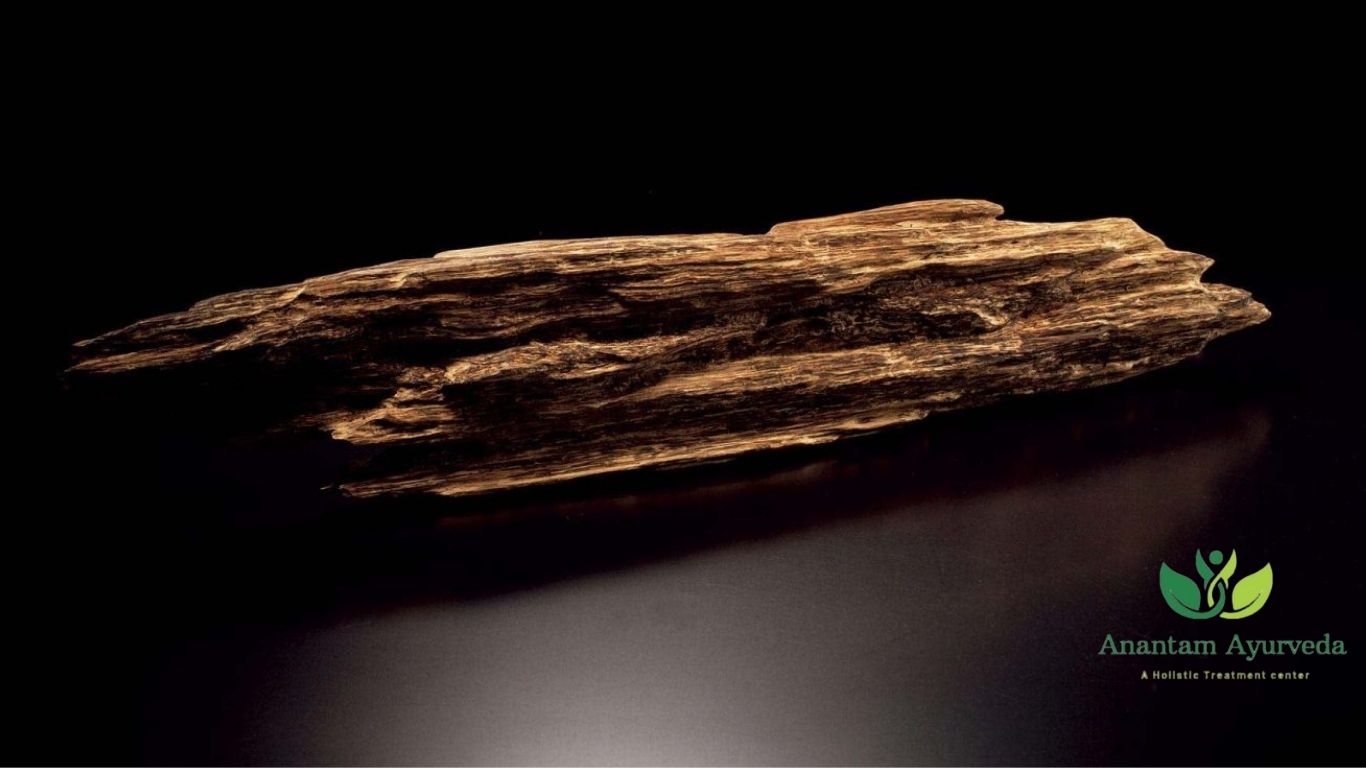
Physical and Medicinal Properties of Agarwood
Agarwood is prized not only for its aroma but also for its intense therapeutic attributes:
-
The bark emits a naturally pleasant scent and is used for fumigation therapy.
-
Fumigation with Agaru is traditionally prescribed for non-healing ulcers, particularly those with purulent discharge, as it helps dry the wound surface and promote healing.
-
The aromatic smoke has antiseptic, anti-inflammatory, and calming effects, often employed in both spiritual cleansing and wound care.
Formation of Agarwood
The formation of Agarwood is a unique natural response to fungal infection. When the Aquilaria tree suffers wounds to its bark, certain fungi invade, triggering a remarkable defensive response from the plant.
-
This results in the production of oleoresin, which impregnates the wood and gradually transforms it into dark-colored, resin-rich, and highly aromatic masses.
-
These dark streaks, visible in the bole of the tree, are the primary source of Agarwood.
-
The intensity and spread of these streaks indicate the quality and quantity of the resin.
Age-Dependent Quality
-
20-Year-old trees may show early signs of Agarwood formation.
-
50-Year-old trees produce commercially valuable resin.
-
80-Year-old trees yield the richest and most resinous agar, making them highly sought-after in traditional and commercial markets.
Geographical Distribution of Agarwood
Aquilaria agallocha thrives in humid tropical climates, particularly in:
-
Northeastern India: Arunachal Pradesh, Assam, Nagaland, Manipur, Tripura
-
Other countries: Bhutan, Myanmar, Sumatra, and Malaysia
-
The resin collection season in India spans July to August, aligning with the region’s high rainfall and humidity.
This specific climatic and ecological niche makes Agarwood a geographically limited yet economically significant botanical treasure.
Chemical Constituents of Agarwood
The richness of Agarwood lies in its complex array of volatile and non-volatile compounds that contribute to its distinct aroma and medicinal value.
Major Phytochemicals
-
Agarol (Sesquiterpene alcohol): Primary aromatic and medicinal agent
-
Agarospirol, Aquillochin, Jinkohol, Jinkoheremol
-
Holocellulose, Lignan, Pentosans
-
A- and B-agarofurans, Nor-keto-agarofurans, Dihydrokaranone, Kusunol
-
Agarotetrol: Contributes to antioxidant and antimicrobial actions
These phytochemicals possess properties that are anti-inflammatory, antimicrobial, and neuroprotective, aligning with the classical Ayurvedic description of Agaru.
Therapeutic Properties of Agaru
Rasa Panchaka
-
Rasa (Taste): Katu (Pungent), Tikta (Bitter)
-
Guna (Qualities): Laghu (Light), Ruksha (Dry), Teekshna (Piercing)
-
Veerya (Potency): Ushna (Hot)
-
Vipaka (Post-digestive Effect): Katu (Pungent)
- Prabhava: Shwasaghna (Specifically alleviates respiratory disorders)
Effect on Tridoshas
-
Pacifies Kapha and Vata doshas
-
Should be used cautiously in Pitta disorders due to its heat-generating properties

Ayurvedic Actions and Indications of Agarwood
Agarwood is classified under several therapeutic categories due to its wide spectrum of action:
-
Tvachya – Enhances and purifies the skin
-
Karnarogahara – Alleviates ear disorders
-
Akshirogahara – Beneficial in ocular disorders
-
Sitapanayana – Useful in managing cold-related symptoms
-
Kushtaghna – Effective against chronic skin diseases like eczema and psoriasis
-
Shirovirechana – Used in Nasya therapy to cleanse the head region
-
Shvasahara – Relieves conditions like asthma, bronchitis, and dyspnea
Parts Used and Dosage of Agaru
Medicinal Parts
-
Resinous wood (heartwood)
-
Essential oil (Agarwood oil or Aloeswood oil)
Recommended Dosage
-
Powder (Churna): 3–5 grams/day, in divided doses
-
Oil: 1–5 drops, externally applied or used in aromatherapy
-
Fumigation: Resin burned as dhoop or incense for respiratory cleansing and wound healing
Use under professional supervision is advised, especially when using essential oil or for internal purposes.
Traditional and Modern Applications
In Ayurveda
-
Incorporated in Agarvadyasava, Agaru Taila, and other classical formulations
-
Fumigation used in operating theaters, temples, and homes for spiritual and antiseptic purposes
-
Utilized in medicated oils and powders for respiratory, dermatological, and neurological treatments
In Modern Wellness
-
Core ingredient in high-end perfumes and attars
-
Used in aromatherapy to induce relaxation, mental clarity, and spiritual connection
-
Demonstrated efficacy in scientific studies for antioxidant, antispasmodic, and sedative effects
Sustainability and Conservation Concerns
Due to its slow growth and rarity, Aquilaria agallocha is now considered threatened. Overharvesting for perfume and traditional medicine has led to conservation efforts across Asia.
-
Artificial inoculation techniques are now used to stimulate resin production without harming wild populations
-
Sustainable agroforestry practices are being promoted to ensure long-term viability and eco-friendly harvesting
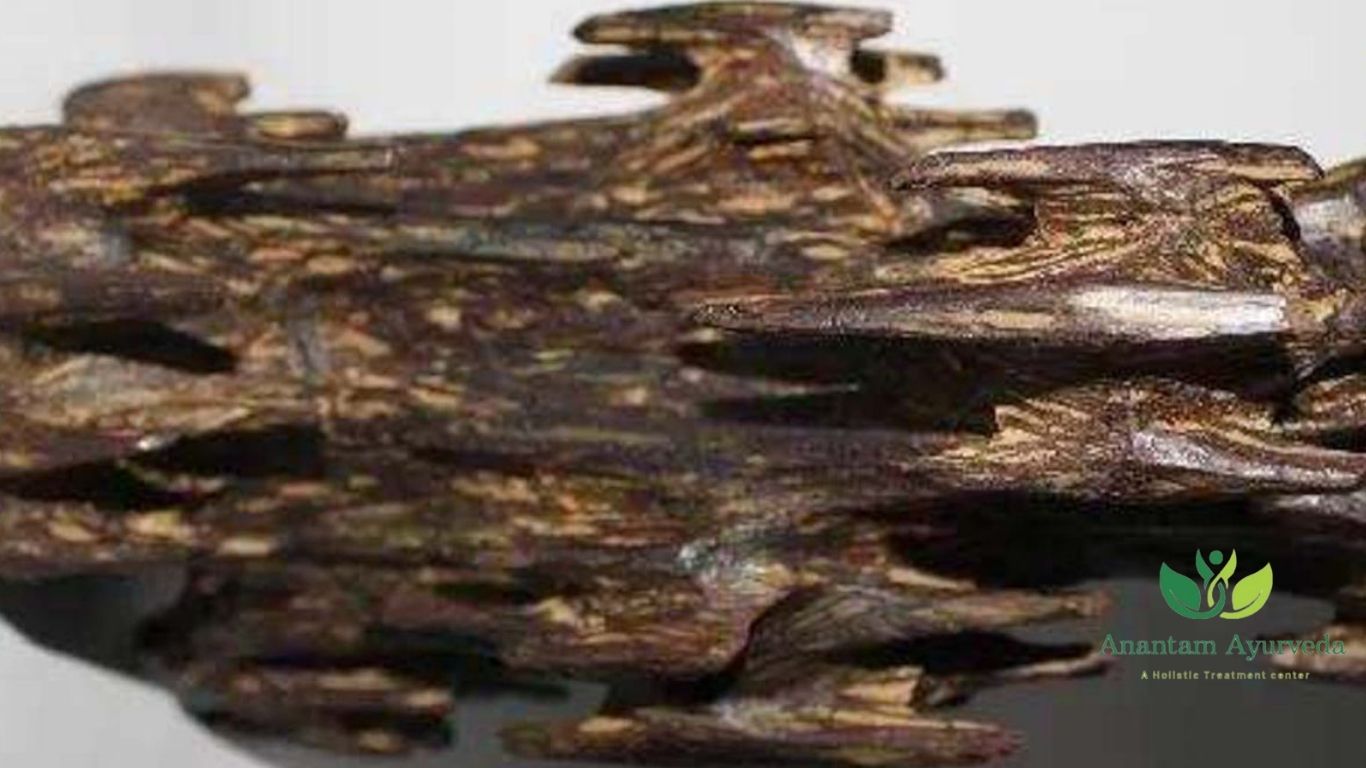
Therapeutic Uses of Agaru in Ayurveda
Agaru (Aquilaria agallocha), revered in Ayurveda for its deeply heating and piercing nature, is a botanical with profound pharmacodynamic effects. Rooted in the ancient texts and clinical traditions of Ayurveda, Agaru exerts therapeutic influence through its Ushna Veerya (hot potency) and Tikshna Guna (penetrating quality). These properties make it especially useful in treating Kapha and Vata disorders, where its actions are both corrective and curative.
Agaru and Cold Season Therapy
One of the classical Ayurvedic applications of Agaru is in managing cold exposure during winter. In frost-prone seasons, the skin’s surface becomes vulnerable to external cold, affecting the Bhrajaka Pitta—the subtype of Pitta that governs skin function and luster.
-
Topical application of warm Agaru paste over exposed body parts helps counteract frostbite and chill-induced discomfort.
-
This application stimulates Bhrajaka Pitta, restoring circulation, heat, and sensation to cold-affected areas.
Management of Fevers with Chills
In febrile conditions where chills dominate, the application of Agaru Lepa (paste) serves as a potent external remedy.
-
The innate heat of Agaru assists in warming the skin and reducing shivering.
-
It acts by stimulating peripheral blood flow, enhancing heat generation, and thereby facilitating temperature regulation in the body.
Agaru in Tamaka Shwasa (Bronchial Asthma and Bronchitis)
Tamaka Shwasa, a chronic Kapha-Vata disorder akin to bronchial asthma, involves mucous accumulation in the Pranavaha Srotas (respiratory tract). Ayurveda recommends Shodhana (purification) followed by Agaru-based therapy.
Role Post Panchakarma Detox
-
After Vamana (therapeutic emesis) and Virechana (therapeutic purgation), Agaru powder mixed with honey is administered.
-
This combination:
-
Liquefies and dislodges adherent mucous
-
Facilitates expectoration
-
Restores unobstructed airflow through the bronchioles
-
Fumigation Therapy (Dhoopana)
-
Inhalation of Agaru smoke through the nostrils and exhalation through the mouth:
-
Clears phlegm blockages
-
Reduces wheezing and breathlessness
-
Supports lung function via its Ushna and Tikshna properties
-
Agaru for Chronic Ulcers and Skin Conditions
Non-healing ulcers and exudative wounds benefit greatly from fumigation with Agaru Churna (powder).
-
Its desiccating property dries wound secretions and prevents microbial growth.
-
The aromatic compounds accelerate wound healing by promoting circulation and detoxifying the local tissue.
Agaru Lepa for Skin Disorders
-
In eczema and other inflammatory skin lesions:
-
Agaru paste acts as a natural emollient
-
Softens rough, flaky skin
-
Reduces itchiness, inflammation, and discomfort
-
-
Helps restore the texture and tone of the skin over time
Musculoskeletal Benefits of Agaru
The anti-Vata property of Agaru is particularly beneficial in painful joint and muscular disorders, including:
-
Osteoarthritis
-
Gouty arthritis
-
Rheumatism
-
Vata-vyadhis (neuromuscular diseases)
Application Method
-
Topical Lepa (paste) applied over painful areas
-
Reduces inflammation
-
Relieves stiffness and pain
-
Improves mobility and joint flexibility
-
This makes Agaru a valuable addition to Ayurvedic external therapies such as Abhyanga (massage) and Upanaha (poultice).
Ear and Eye Disorders Treated with Agaru
Agaru’s soothing yet penetrating action extends to ENT and ophthalmologic disorders.
Ear Care
-
Agaru-based oil, when used as ear drops, provides:
-
Relief from otalgia (ear pain)
-
Treatment for suppurative otitis (middle ear pus discharge)
-
Anti-inflammatory and antimicrobial action within the auditory canal
-
Eye Care
-
Thin paste of Agaru applied over eyelids alleviates:
-
Pain and swelling
-
Inflammation due to allergic or infectious causes
-
Enhances ocular comfort and reduces strain
-
The Ayurvedic pharmacodynamics of Agaru reveals it to be much more than a fragrant substance—it is a multi-utility therapeutic agent rooted in centuries of holistic medical practice. From mitigating respiratory and joint disorders to healing skin lesions and offering comfort in sensory ailments, Agaru proves its versatility and potency.
Its ability to stimulate, cleanse, and restore vital systems—particularly the skin, respiratory tract, and nervous system—makes it an indispensable tool in Ayurvedic therapy. As research continues to validate its traditional uses, Agaru stands as a shining example of how ancient wisdom and modern wellness can converge.
Classical Formulations Featuring Agaru
Agaru is an important ingredient in numerous classical Ayurvedic preparations. Its aromatic, warming, and dosha-balancing properties make it invaluable in both external and internal therapies.
Formulations:
-
Agarvadi Taila – Medicated oil used for fumigation, ear conditions, and local massage in vata-kapha disorders.
-
Agarvadi Choorna – Powdered blend used in respiratory ailments and digestive disturbances.
-
Chandana Agaru Kwatha – Decoction of sandalwood and agaru; used for fevers, skin conditions, and to reduce pitta.
-
Anu Taila – A nasal drop formulation used in Nasya therapy; Agaru acts as a shiro virechaka (clears the head channels).
-
Madhukasava – Fermented preparation helpful in respiratory and digestive disorders.
-
Chandanadi Taila – Cooling and aromatic oil used in headaches, burning sensations, and eye disorders.
-
Shwasahara Kashaya Choorna – A decoction powder beneficial in managing asthma, bronchitis, and chronic cough.
-
Guduchyadi Taila – Used in skin disorders, especially those involving itching and inflammation.
-
Khadiradi Gutika – Herbal lozenge helpful in throat infections, dental problems, and mouth ulcers.
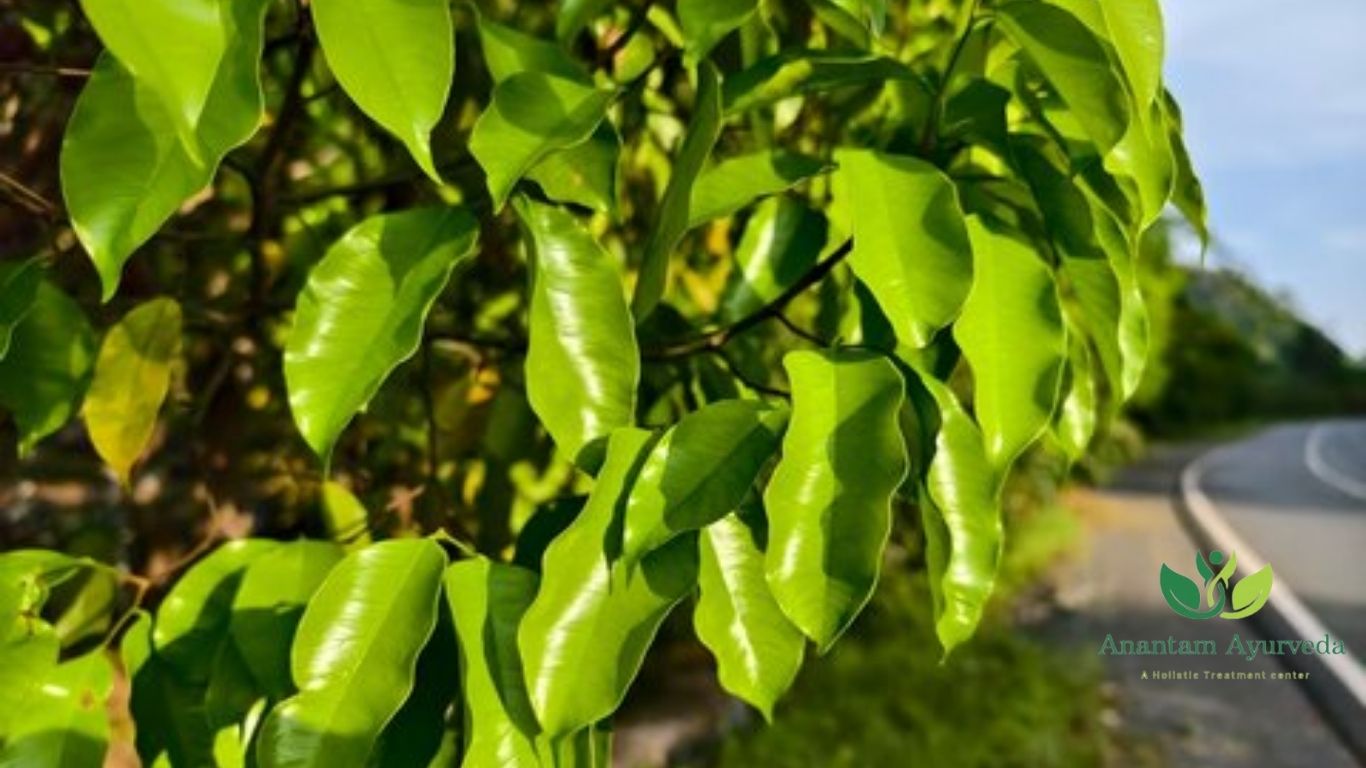
Agarwood vs Sandalwood – What Are The Differences?
Agarwood (Aquilaria agallocha) and Sandalwood (Santalum album) are two of the most prized aromatic woods used in Ayurveda, perfumery, and spiritual practices. While both are renowned for their fragrance and therapeutic benefits, they differ in origin, qualities, uses, and Ayurvedic properties.
Botanical Origin
| Feature | Agarwood (Agaru) | Sandalwood (Chandana) |
|---|---|---|
| Botanical Name | Aquilaria agallocha | Santalum album |
| Plant Family | Thymelaeaceae | Santalaceae |
| Part Used | Resinous heartwood formed after fungal infection | Aromatic heartwood from mature trees |
| Formation | Formed pathologically due to fungal attack | Formed naturally without disease |
Ayurvedic Properties (Rasa Panchaka)
| Property | Agarwood (Agaru) | Sandalwood (Chandana) |
|---|---|---|
| Rasa (Taste) | Katu (pungent), Tikta (bitter) | Tikta (bitter), Madhura (sweet) |
| Guna (Qualities) | Laghu (light), Teekshna (sharp), Ruksha (dry) | Guru (heavy), Snigdha (unctuous), Mridu (soft) |
| Virya (Potency) | Ushna (hot) | Sheeta (cool) |
| Vipaka (Post-digestive effect) | Katu (pungent) | Madhura (sweet) |
| Effect on Doshas | Balances Kapha and Vata | Balances Pitta and Kapha |
Therapeutic Uses in Ayurveda
| Use Case | Agarwood | Sandalwood |
|---|---|---|
| Respiratory Disorders | Used in asthma, bronchitis, and cough (Shwasahara) | Mildly helpful; more cooling in nature |
| Skin Disorders | Applied in eczema, ulcers, and wounds (Kushtaghna) | Excellent in acne, burning sensations, heat rashes |
| Mental Wellness | Calms nerves, used in fumigation and meditation | Uplifts mood, relieves stress, anxiety and anger |
| Nasya (Nasal Therapy) | Used in Anu Taila, clears head channels | Used in Chandanadi Taila, cools and soothes |
| Digestive Benefits | Carminative and stimulant (Deepana, Pachana) | Mildly digestive, mainly pitta-shamana |
| Antimicrobial Use | Strong fumigant; disinfects atmosphere | Mild antimicrobial, mainly aromatic cooling agent |
Potency & Aroma
-
Agarwood has a deep, warm, woody, and mystically rich aroma, derived from oleoresin produced during fungal infection. It is used in high-end incense, attars, and therapeutic fumigation.
-
Sandalwood exudes a soft, cooling, sweet fragrance and is used in cosmetics, perfumery, and spiritual rituals.
Spiritual & Ritual Importance
| Usage in Rituals | Agarwood | Sandalwood |
|---|---|---|
| Dhupa (Incense) | Used extensively for purification and grounding | Used for calming, devotion, and prayer |
| Meditation Practices | Enhances focus, clears mental fog | Soothes the mind and enhances tranquility |
| Ayurvedic Fumigation | Disinfects spaces and treats respiratory ailments | Used for aroma therapy and cooling the senses |
Summary: Key Differences
| Aspect | Agarwood | Sandalwood |
|---|---|---|
| Origin | Resin formed due to fungal infection | Naturally aromatic wood |
| Potency | Hot, sharp, stimulant | Cooling, soothing |
| Dominant Effect | Vata-Kapha balancing | Pitta-Kapha balancing |
| Ayurvedic Classification | Shwasahara, Sheeta Prashamana, Tikta Skandha | Pittahara, Varnya, Jwarahara |
| Fragrance Type | Rich, smoky, exotic | Sweet, smooth, floral |
While both Agaru and Chandana hold significant value in Ayurveda and traditional healing systems, they are used distinctly based on doshic imbalances and therapeutic goals.
-
Use Agarwood when heat, stimulation, and kapha-vata clearing is required.
-
Use Sandalwood when cooling, soothing, and pitta-pacifying effects are desired.
Substitution and Adulteration of Agaru
Due to its high demand and commercial value, Agaru powder is frequently subjected to adulteration. This compromises the therapeutic potency and authenticity of Ayurvedic formulations.
Common Adulterants & Substitutes:
-
Uninfected Aquilaria wood – Often mixed with the infected resinous heartwood to bulk up volume.
-
Other Aquilaria species such as:
-
Aquilaria crassana
-
Aquilaria malaccensis
-
Aquilaria sinensis
-
-
Non-Aquilaria substitutes:
-
Symplocos racemosa
-
Mandragora officinalum
-
These adulterants lack the characteristic oleoresin, aroma, and potency of true Aquilaria agallocha, which may significantly reduce the therapeutic efficacy of formulations.
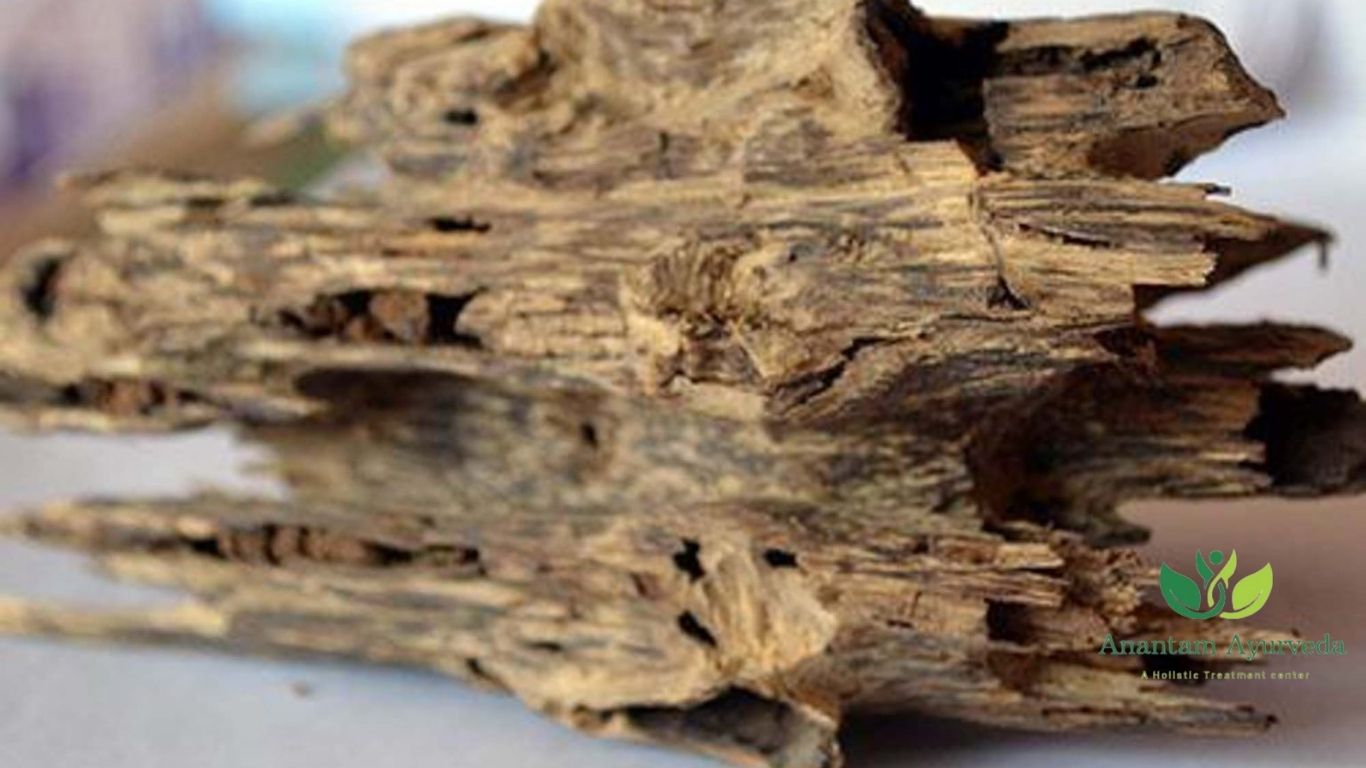
Modern Scientific Research and Publications
1. Anti-Inflammatory Properties of Agarwood Compounds
-
Title: Sesquiterpenoids and Hexanorcucurbitacin from Aquilaria malaccensis Agarwood with Anti-Inflammatory Effects by Inhibiting the STAT1/AKT/MAPK/NLRP3 Pathway
-
Authors: C. T. Ma et al.
-
Published In: RSC Advances, 2024
-
Key Findings: The study identified novel sesquiterpenoids and a rare hexanorcucurbitacin from Aquilaria malaccensis agarwood. These compounds exhibited significant anti-inflammatory effects by inhibiting the STAT1/AKT/MAPK/NLRP3 signaling pathway, suggesting potential therapeutic applications in inflammatory diseases. RSC Publishing
2. Biosynthesis and Pharmacological Activities of Agarwood Sesquiterpenoids
-
Title: Sesquiterpenoids in Agarwood: Biosynthesis, Microbial Induction, and Pharmacological Activities
-
Authors: Xinghao Zhang et al.
-
Published In: Journal of Agricultural and Food Chemistry, 2024
-
Key Findings: This comprehensive review elucidates the biosynthetic pathways of sesquiterpenes in agarwood, highlighting the role of microbial induction in enhancing sesquiterpene production. It also discusses the pharmacological properties of these compounds, including anti-inflammatory and antimicrobial effects, and addresses challenges in sustainable agarwood production. ACS Publications+2ACS Publications+2PubMed+2ACS Publications+2ACS Publications+2PubMed+2
3. Impact of Artificial Induction Methods on Agarwood Composition
-
Title: Utilizing Metabolomics and Network Analysis to Explore the Effects of Artificial Production Methods on the Chemical Composition and Activity of Agarwood
-
Authors: W. Hou et al.
-
Published In: Frontiers in Pharmacology, 2024
-
Key Findings: The study employed metabolomic and network analysis to assess how different artificial induction techniques affect the volatile metabolites of agarwood. Findings indicate that certain artificial methods can produce agarwood with higher concentrations of bioactive compounds, potentially offering effective alternatives to wild-sourced agarwood for therapeutic uses. Frontiers
4. Potential Therapeutic Use of Agarwood for Diabetes
-
Title: The Potential Therapeutic Use of Agarwood for Diabetes: A Scoping Review
-
Published In: 2024
-
Key Findings: This scoping review analyzed in vitro and in vivo studies, suggesting that agarwood exhibits hypoglycemic, antidyslipidemic, anti-obesity, and organ-protective effects. These findings underscore the potential of agarwood in managing type 2 diabetes, warranting further clinical research. PubMed
5. Microbial Communities’ Role in Agarwood Formation
-
Title: Deciphering the Roles of Bacterial and Fungal Communities in the Formation and Quality of Agarwood
-
Authors: C. C. Fu et al.
-
Published In: Stress Biology, 2024
-
Key Findings: The research highlights the significant influence of bacterial and fungal communities on agarwood formation and quality. Understanding these microbial interactions is crucial for developing sustainable agarwood production methods and improving resin quality. SpringerLink+1PubMed+1PubMed
6. Sedative and Hypnotic Effects of Agarwood Essential Oil
-
Title: Effective Components and Molecular Mechanism of Agarwood Essential Oil Inhalation and the Sedative and Hypnotic Effects Based on GC-MS-Qtof and Molecular Docking
-
Published In: 2024
-
Key Findings: The study utilized GC-MS-Qtof and molecular docking to identify active components in agarwood essential oil responsible for its sedative and hypnotic effects. The findings provide a molecular basis for the traditional use of agarwood in promoting sleep and relaxation. PubMed+1ACS Publications+1
7. Molecular Diagnostic Technology for Agarwood Species Identification
-
Title: Successful Development of Molecular Diagnostic Technology Combining Mini-Barcoding and High-Resolution Melting for Traditional Chinese Medicine Agarwood Species Based on Single-Nucleotide Polymorphism in the Chloroplast Genome
-
Published In: Frontiers in Plant Science, 2024
-
Key Findings: The research developed a molecular diagnostic method combining mini-barcoding and high-resolution melting analysis to accurately identify agarwood species. This technique enhances the authentication of agarwood in traditional medicine, ensuring quality and preventing adulteration. Frontiers
Conclusion
Agarwood (Agaru) is a divine botanical, steeped in Ayurvedic tradition and enriched with powerful healing, aromatic, and spiritual virtues. From its role in managing doshic imbalances to its revered place in spiritual purification, Agaru remains a symbol of Ayurveda’s depth and sophistication. As research continues to unveil its multi-dimensional uses, the future of this fragrant wood shines bright in both classical and contemporary healthcare systems.
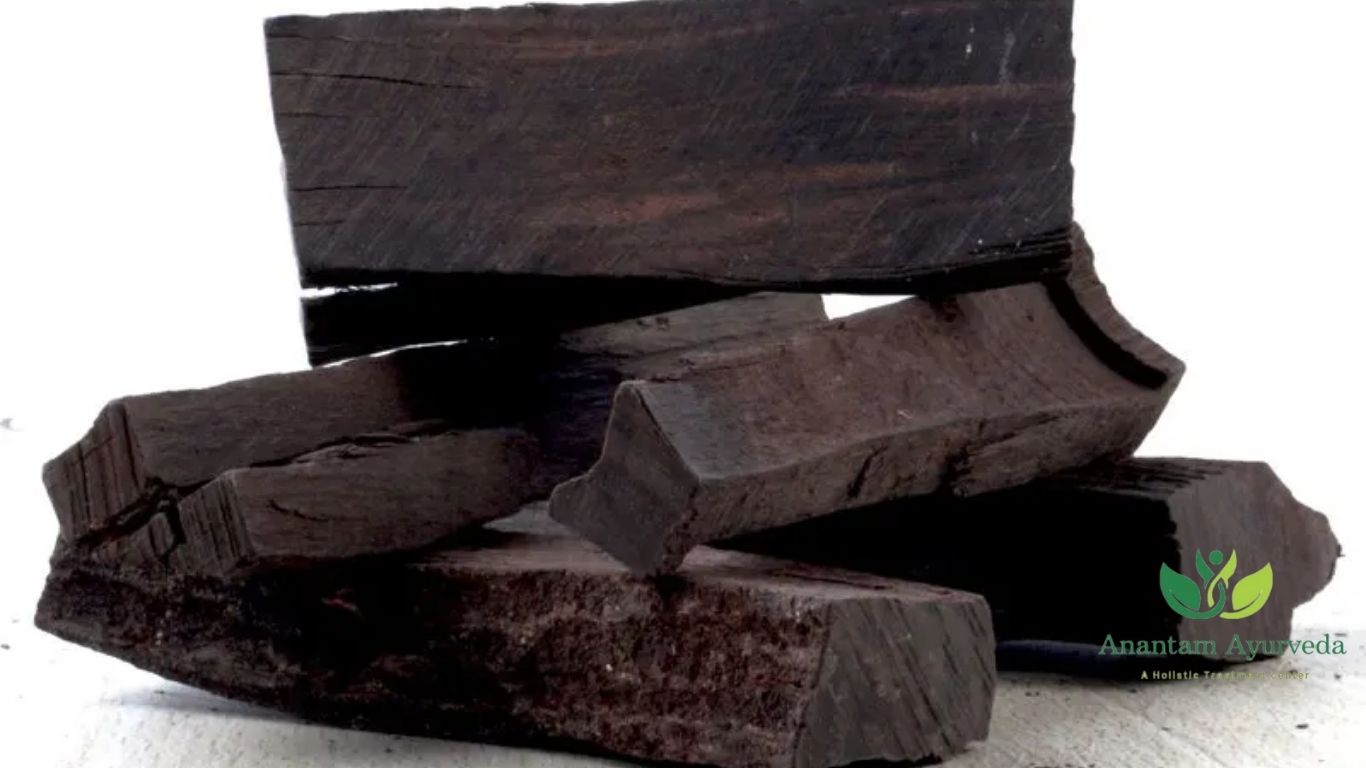
Frequently Asked Questions about Agarwood (Agaru)
1. What is Agarwood (Agaru)?
Agarwood, known as Agaru in Ayurveda, is a fragrant resinous wood formed in trees of the Aquilaria and Gyrinops species when they become infected or injured. The resin is highly valued for its unique aroma and has been used traditionally in incense, perfumes, and medicines.
2. What are the traditional Ayurvedic uses of Agaru?
In Ayurveda, Agaru is esteemed for its:
-
Ushna Virya (Hot Potency): Helps in balancing Vata and Kapha doshas.
-
Shwasahara (Respiratory Relief): Used in managing respiratory conditions like bronchitis.
-
Analgesic Properties: Applied externally to alleviate pain in conditions like osteoarthritis and rheumatic joints.
-
Skin Health: Used in treating eczematous lesions and non-healing ulcers.
-
Ear and Eye Disorders: Agaru-based oils are used to relieve earaches and eye inflammations.
3. What are the main chemical constituents of Agarwood?
Agarwood contains several bioactive compounds, including:
-
Sesquiterpenes: Contribute to its aroma and therapeutic properties.
-
2-(2-Phenylethyl)chromones: Associated with various pharmacological activities.
-
Aromatic Compounds: Enhance its fragrance and medicinal value.
4. What are the modern scientific findings on Agarwood’s pharmacological activities?
Recent studies have highlighted Agarwood’s potential in:
-
Anti-Inflammatory Effects: Compounds in Agarwood inhibit pathways like STAT1/AKT/MAPK/NLRP3, reducing inflammation.
-
Neuroprotective Properties: Agarwood compounds may modulate inflammatory genes, alleviate neuroinflammation, and support brain health.
-
Mental Health Benefits: Volatile metabolites in Agarwood show promise in treating insomnia, anxiety, and depression.
-
Antimicrobial and Antioxidant Activities: Agarwood exhibits properties that combat microbial infections and oxidative stress.
5. How is Agarwood used in modern therapeutic applications?
Agarwood is utilized in various forms:
-
Essential Oils: Used in aromatherapy for relaxation and mental well-being.
-
Topical Applications: Incorporated into creams and oils for skin conditions and pain relief.
-
Inhalation Therapies: Agarwood smoke or vapor is used in traditional practices to treat respiratory ailments.
6. Are there any sustainability concerns regarding Agarwood?
Yes, overharvesting of wild Agarwood has led to the endangerment of Aquilaria species. To address this, artificial induction methods and sustainable cultivation practices are being researched and implemented to meet demand without depleting natural resources.
7. Can Agarwood be used in combination with other herbs?
In traditional formulations, Agarwood is often combined with herbs like Sandalwood (Santalum album), Guduchi (Tinospora cordifolia), and Khadira (Acacia catechu) to enhance its therapeutic effects. These combinations are tailored based on the specific health condition being addressed.
You can also read about Sarpagandha (Rauvolfia serpentina): Is It Good for Hypertension?
